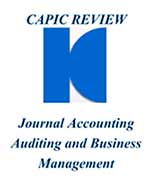Published 2015-12-10
Keywords
- Abnormal return,
- event study,
- spin-off
How to Cite
Abstract
A spin-off is a corporate divestment strategy in which a firm is split into two (or more)independent companies but under the common equity ownership of the shareholders of the parent company.
This study evaluates the effect on stock returns of the spin-off announced by Compañía Sud Americana de Vapores (CSAV) in September 2011. This in order to draw lessons about a specific corporate divestment strategy and its effects on shareholder´s wealth in the context of an emerging and relatively small market as the Chilean stock market.
Through the event study methodology this paper studies the effect on the CSAV´s stock return of the followings facts: income of Grupo Luksic to the CSAV property; the announcement of the spin-off of CSAV; and approval of the shareholders of CSAV capital rise by USD1,200 million.
In the first event the share of CSAV recorded a significant positive abnormal returns on t=0 and the CAR on t=+10 is also positive and significant, showing a favorable market reaction. In the second event significant negative abnormal returns are seen from t=0 to t=+2, showing a negative market reaction to the announcement of the spin-off and a loss of wealth for the shareholders. The CAR on t=+10 is negative and significant, between -18.65% y -24.91%. In the third event, two (of three) models recorded significant negative abnormal return on t=0, however the CAR on t=+10 is not significant.
Downloads
References
2. Brown, S., & Warner, J. (1980). Measuring security price performance. Journal of Financial Economics 8, pp. 205-258.
3. Chemmanur, T.J., Krishnan, K. & Nandy, D.K.2014). The effects of corporate spin-offs on productivity. Journal of Corporate Finance, 27, pp.72–98.
4. Çolak, G. & Whited, T.M. (2007). Spinoffs, Divestitures,and Conglomerate Investment. Review of Financial Studies, 20(3), pp. 557-595.
5. Cusatis, P.J., Miles, J.A. & Woolridge, J.R. (1993).Restructuring through spinoffs. The stock market evidence. Journal of Financial Economics, 33(3), pp. 293-311.
6. Daley, L., Mehrotra, V. & Sivakumar, R. (1997).Corporate focus and value creation: Evidence from spinoffs. Journal of Financial Economics, 45(2), pp. 257-281.
7. Desai, H. & Jain, P.C. (1999). Firm performance and focus: Long-run stock market performance
8. following spinoffs. Journal of Financial Economics, 54(1), pp. 75-101.
9. Gertner, R., Powers, E. & Scharfstein, D. (2002).Learning about internal capital markets from corporate spinoffs. Journal of Finance, 57(6), pp.2479-2506.
10. Gilson, S., Healy, P. & Palepu, K. (1998). Corporate focus and the benefits from more specialized analysts coverage. Harvard Business School, Working Paper.
11. Hite, G.L. & Owers, J.E. (1983). Security Price reactions around corporate spin-off announcements. Journal of Financial Economics, 12(4), pp. 409-436.
12. Krishnaswamia, S. & Subramaniam, V. (1999).Information asymmetry, valuation, and the corporate spin-off decision. Journal of Financial Economics, 53(1), pp. 73–112.
13. McConnell, J. J., Ozbilgin, M. & Wahal, S. (2001).Spin-offs, ex ante. Journal of Business, 74(2), pp.245–280.
14. Martín, J. (2003). Metodología de los estudios de sucesos: una revisión. Investigaciones Europeas de Dirección y Economía de la Empresa, 9,197–244.
15. Maxwell, W.F. & Rao, R.P. (2003). Do spin-offs expropriate wealth from bondholders? Journal of Finance ,58(5), pp. 2087-2108.
16. Parrino, R. (1997). Spinoffs and wealth transfers: The Marriott case. Journal of Financial Economics, 43(2), pp. 241-274.
17. Schipper, K. & Smith, A. (1983). Effects of recontracting on shareholder wealth. The case of voluntary spinoffs. Journal of Financial Economics, 12(4), pp. 437-467.
18. Seifert, B. & Rubin, B. (1989). Spinoffs and the listing phenomena. Journal of Economics and Business, 41(1), pp. 1-19.
19. Veld, C. & Veld-Merkoulova, Y.V. (2004). Do spin-offs really create value? The European case. Journal of Banking and Finance, 28(5), pp. 1111-1135.
20. Veld, C. & Veld-Merkoulova, Y.V. (2008). An empirical analysis of the stockholder-bondholder conflict in corporate spin-offs. Financial Management, 37(1), pp. 103-124.
21. Veld, C. & Veld-Merkoulova, Y.V. (2009). Value creation through spin-offs: A review of the empirical evidence. International Journal of Management Reviews, 11(4), pp. 407-420.


































